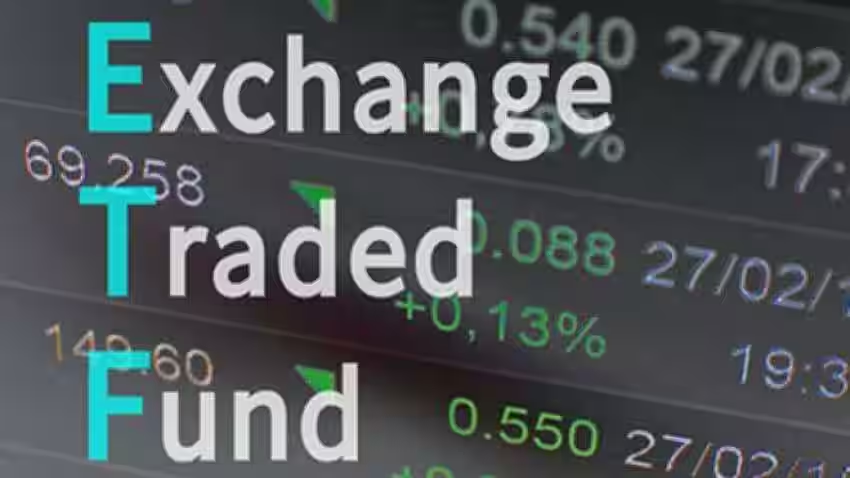The Central Public Sector Enterprises Exchange Traded Fund (CPSE ETF) has emerged as an attractive investment avenue for small investors seeking exposure to India’s prominent public sector undertakings (PSUs). Launched by the Government of India, the CPSE ETF offers a diversified portfolio of blue-chip PSU stocks, providing investors with an opportunity to participate in the growth story of India’s public sector with the benefits of exchange-traded funds. This detailed analysis explores the structure, performance, and advantages of CPSE ETF, highlighting why it stands out as a compelling investment option for small investors.
Understanding CPSE ETF
The CPSE ETF is a unique exchange-traded fund that tracks the Nifty CPSE Index, comprising select CPSE stocks identified by the government for disinvestment. Managed by Nippon India Mutual Fund (formerly Reliance Mutual Fund), the ETF was first introduced in March 2014 as a part of the government’s divestment program to reduce its stake in selected PSUs while providing retail investors with a streamlined investment vehicle.
Key Features of CPSE ETF
- Portfolio Composition: The ETF invests in a basket of 12 prominent CPSEs across various sectors such as energy, mining, finance, and engineering, providing diversified exposure.
- Government Backing: Being a government-initiated fund, it enjoys a high level of credibility and stability.
- Cost-Efficient: With lower expense ratios compared to actively managed funds, it offers a cost-effective investment option.
- Liquidity and Transparency: Listed and traded on stock exchanges, CPSE ETF provides high liquidity and transparency in pricing.
Portfolio Composition and Sectoral Allocation
The CPSE ETF’s portfolio is strategically composed to represent the performance of leading CPSEs. As of October 2023, the major holdings and sectoral allocations are as follows:
Top Holdings:
| Company Name | Sector | Weightage (%) |
|---|---|---|
| ONGC | Energy | 20.00 |
| NTPC | Energy | 15.00 |
| Coal India | Mining | 12.50 |
| Indian Oil Corporation | Energy | 10.00 |
| Power Grid Corporation | Utilities | 8.00 |
| Bharat Electronics | Engineering | 6.50 |
| Oil India | Energy | 5.00 |
| NBCC | Construction | 4.00 |
| NLC India | Energy | 3.00 |
| SJVN | Utilities | 2.50 |
Note: The above figures are illustrative and approximate as per the latest available data up to the knowledge cutoff.
Sectoral Allocation:
- Energy: Approximately 50%
- Utilities: Approximately 10%
- Mining: Approximately 12.5%
- Engineering and Construction: Approximately 10%
- Finance and Others: Remaining percentage
This diversified sectoral allocation allows investors to benefit from the growth and stability of various industries within the public sector domain.
Performance Analysis
The CPSE ETF has showcased a mixed performance trajectory influenced by market dynamics, economic policies, and sector-specific developments.
Historical Returns:
| Period | Returns (%) |
|---|---|
| 1 Year | 8.5 |
| 3 Years (CAGR) | 6.2 |
| 5 Years (CAGR) | 7.8 |
| Since Inception (CAGR) | 9.0 |
Note: The returns are indicative and based on available data up to October 2023.
Dividend Yield:
One of the standout features of the CPSE ETF is its attractive dividend yield, owing to the high-dividend-paying nature of constituent CPSEs. Historically, the ETF has offered a dividend yield ranging between 4% to 6%, providing a steady income stream to investors.
Volatility and Risk Adjusted Returns:
The CPSE ETF has exhibited moderate volatility compared to broader market indices. The presence of large-cap, stable PSUs contributes to lower risk, making it suitable for conservative investors seeking steady growth and income.
Why CPSE ETF is Attractive for Small Investors
The CPSE ETF presents several advantages that make it particularly appealing to small investors:
1. Affordable Entry Point
- Low Investment Threshold: Investors can start investing with a small amount, making it accessible for those with limited capital.
- Fractional Ownership: The ETF structure allows investors to own a fraction of high-value stocks, providing exposure to expensive stocks at a lower cost.
2. Diversification Benefits
- Broad Exposure: Investing in CPSE ETF provides instant diversification across multiple sectors and companies, reducing unsystematic risk.
- Balanced Portfolio: The mix of cyclical and defensive sectors helps in balancing returns during different economic cycles.
3. Cost-Effectiveness
- Low Expense Ratio: Compared to actively managed funds, CPSE ETF has a lower expense ratio, enhancing net returns for investors.
- Reduced Transaction Costs: Trading on exchanges minimizes additional charges, making it a cost-effective investment option.
4. Liquidity and Flexibility
- Easy Trading: Being listed on stock exchanges, CPSE ETF units can be bought and sold easily during trading hours, providing high liquidity.
- Transparency: Real-time pricing and disclosed portfolio holdings ensure transparency, helping investors make informed decisions.
5. Tax Efficiency
- Favorable Tax Treatment: ETFs often enjoy better tax efficiency compared to mutual funds, with benefits like lower capital gains tax for long-term holdings.
- No Entry or Exit Loads: Investors are not burdened with additional charges when entering or exiting the investment.
6. Government Initiatives and Support
- Policy Backing: The government’s ongoing reforms and support for CPSEs can lead to improved performance and profitability of constituent companies.
- Disinvestment Opportunities: Regular tranches and follow-on offers provide opportunities to invest at discounted rates, enhancing potential returns.
7. Regular Income through Dividends
- High Dividend Yield: The consistent dividend payments from underlying CPSEs provide a regular income stream, beneficial for income-focused investors.
- Reinvestment Opportunities: Dividends received can be reinvested to compound returns over the long term.
Risks and Considerations
While CPSE ETF offers numerous benefits, investors should be aware of associated risks:
1. Concentration Risk
- Sector Concentration: A significant portion of the portfolio is allocated to the energy sector, which can be susceptible to sector-specific risks and volatility.
- Company-Specific Risks: Performance is tied to a limited number of companies; adverse developments in major holdings can impact overall returns.
2. Market and Economic Risks
- Economic Slowdown: The performance of CPSEs is closely linked to the domestic economy; economic downturns can adversely affect returns.
- Policy Changes: Regulatory and policy changes can influence the operational and financial performance of CPSEs.
3. Performance Lag
- Underperformance Compared to Private Sector: In some instances, CPSEs may underperform compared to their private-sector counterparts due to bureaucratic hurdles and operational inefficiencies.
- Global Commodity Price Fluctuations: For energy and mining sectors, global commodity price movements can impact profitability.
4. Liquidity in Secondary Market
- Trading Volumes: At times, lower trading volumes can affect liquidity, leading to wider bid-ask spreads and impacting transaction costs.
Mitigation Strategies
- Long-Term Investment Horizon: Holding investments over the long term can help smooth out short-term volatility and enhance returns.
- Portfolio Diversification: Combining CPSE ETF with other diversified investment options can balance risk and improve overall portfolio performance.
- Regular Monitoring: Keeping track of economic indicators, policy developments, and performance metrics helps in making timely and informed investment decisions.
Conclusion
The CPSE ETF stands out as a robust investment instrument for small investors seeking diversified exposure to India’s public sector enterprises. Its affordable entry point, cost-effectiveness, and potential for steady income through dividends make it an attractive option. While inherent risks exist, prudent investment strategies and a long-term perspective can help investors capitalize on the growth opportunities presented by CPSEs. As India continues its journey towards economic development and reforms, the CPSE ETF offers a promising avenue to participate in the nation’s public sector growth story.






